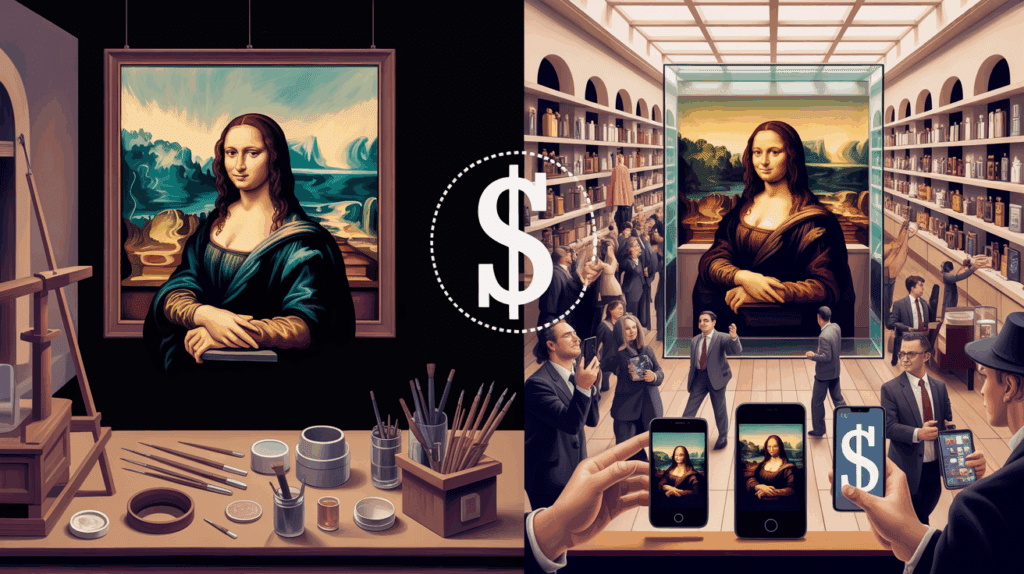Black Arts & Culture Feature:
The Blueprint – How to Build a Cultural Asset That Pays in Perpetuity
Leonardo da Vinci built legacy without leverage.
You don’t have to.
We live in a time where it’s possible—arguably necessary—to turn cultural impact into structured, compounding value. The Mona Lisa teaches us what happens when you don’t. This is where we flip the script.
If you’re a creator, founder, strategist, or brand architect, here’s how you build a Mona Lisa that pays. Not just in views—but in perpetual upside.
1. Design for Remix, But Retain Control
Cultural relevance comes from being used, not just seen. The Mona Lisa thrives because she’s infinitely remixable—but no one owns the funnel.
You need both:
-
Public-facing fluidity (let others adapt, remix, reference)
-
Back-end ownership (smart contracts, licensing terms, rights management)
Be a canvas. But watermark the canvas with infrastructure.
This is how top NFT creators, meme originators, and visual brands retain royalties on every derivative—forever.
2. Build Symbols, Not Just Stories
The Mona Lisa doesn’t have a backstory. That’s her strength.
She’s not famous for her narrative. She’s famous because she’s a symbol. Recognizable, blank, interpretable. A visual shell anyone can plug their own meaning into.
Stop thinking like a content creator. Start thinking like a symbol maker:
-
Logos
-
Icons
-
Characters
-
Formats
-
Visual memes
-
Metaphors
These are cultural infrastructure, not just assets. They persist long after the feed forgets you.
3. Separate Ubiquity from Ownership
The Louvre lets her image go viral. But no one can own the painting.
This is the model:
-
Be everywhere (spread your visual identity, style, or system)
-
But be unbuyable at the core (own the original asset, IP, or master rights)
Ubiquity creates brand gravity. Scarcity creates perceived value.
Together? You build a cultural flywheel that rewards both attention and exclusivity.
Drop prints, not the painting. Release templates, not the core code.
4. Codify Value Capture into the Asset
Don’t wait for lawyers. Bake it into the system:
-
NFTs with embedded royalties
-
Smart licenses with usage tiers
-
Collectible versions of content
-
Revenue splits that scale with derivatives
-
Creator tokens tied to content value
If your idea spreads and you don’t get paid, that’s not virality—it’s leakage.
Great creators don’t just build work—they build protocols.
5. Treat Your Work Like Infrastructure, Not Output
Leonardo made a masterpiece. You’re building a machine.
Think long-term:
-
Can this be referenced in a decade?
-
Can it evolve without you?
-
Can it be sold, split, or recontextualized by others?
-
Can it become part of the culture—not just a post in it?
You’re not here to trend. You’re here to create leverage that survives you.
The Mona Lisa became the ultimate decentralized cultural asset.
But it didn’t benefit her creator. You have the tools, the tech, and the strategy to fix that.
The Mona Lisa Isn’t Just a Masterpiece. She’s an Economy.
The Mona Lisa is not just a painting.
She’s a funnel.
She’s a tourism engine.
She’s a brand asset.
She’s a meme format.
She’s a soft power tool.
She’s a licensing ecosystem in disguise.
She is an economy disguised as art.
And everyone eats from her image—except the man who created her.
The Louvre profits.
France profits.
Publishers, creators, meme pages, fashion labels, ad agencies—they all use her to borrow attention, prestige, or irony. They all extract value.
But Leonardo da Vinci, the originator of the most profitable cultural asset in history, left behind zero infrastructure to capture the value he created.
It’s the clearest case study of what happens when genius isn’t paired with system design.
Here’s the lesson:
Cultural capital compounds, but only if you structure for it.
Without systems, your most iconic work becomes free real estate for someone else’s empire.
Without protocols, your image becomes public property.
Without leverage, your name becomes history—but not wealth.
We don’t live in the Renaissance anymore. You don’t need kings or museums.
You need IP. Mechanisms. Scarcity. Ownership rails.
If you’re building culture and not monetizing the downstream layers, you’re Leonardo working for the Louvre.
You made the asset. They built the infrastructure. And they will win every time unless you change the model.
The Mona Lisa isn’t a tragedy. She’s a blueprint.
She shows you exactly what happens when culture becomes a product—and you forget to hold the license.
The next Mona Lisas won’t sit behind glass.
They’ll sit on ledgers, protocols, and platforms.
They’ll move. They’ll pay. They’ll evolve.
Because creators are done making art that fuels someone else’s museum.
They’re building economies of their own.
Read more from the original source


